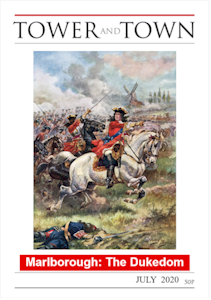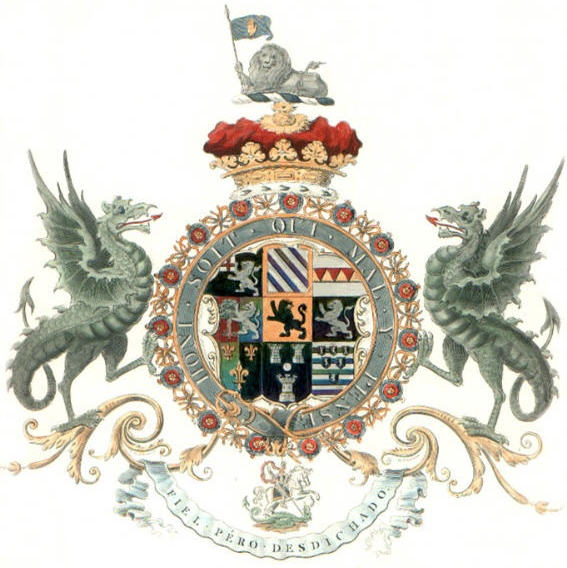

Tower and Town, July 2020 (view the full edition) (view the full edition)Why Marlborough? The Family BackgroundBefore John Churchill became famous there was an Earl of Marlborough to whom he was distantly related. The title was created for James Ley (a cousin of his mother) in 1626. James Ley was MP for Westbury and a judge - latterly Lord Chief Justice of the King's Bench. He took the title of Marlborough as the family held land around Lockeridge. Three years after being created Earl he died. His grandson the third Earl of Marlborough was a naval captain killed in 1665 fighting the Dutch fleet at the Battle of Lowestoft. The title passed to his uncle William Ley and when he died in 1679 it became extinct. John Churchill was born in Musbury, close to Axminster in Devon in 1650 (three years before the fire of Marlborough leading to the construction of the Merchant's House). His father was Sir Winston Churchill, and they were a modest gentry family. Both the Churchills and the Leys backed the royalists in the Civil War and were impoverished as a result, though their fortunes improved with the restoration of King Charles II in 1660. John Churchill had attended St Paul's school in London and then became a page to James, Duke of York, subsequently receiving a commission in the Foot Guards in 1667. He then served in Tangier (1670) and in alliance with France in the Franco-Dutch war (1672 - 1678), in which Charles II participated in return for a secret subsidy from Louis XIV. This participation was unpopular in England, even though the French subsidy was kept secret, and the English withdrew in 1674. John Churchill was well thought of by the talented French commander Turenne however, and although most English troops left or transferred to Dutch service, he and the Duke of Monmouth (of Pitchfork Rebellion fame later) continued to serve with the French armies. Shortly afterwards in 1678 John Churchill, by now a colonel and a Gentleman in Waiting to the Duke of York, married Sarah Jennings who had been a Maid of Honour to the Duchess of York in St James' palace and was very close to Princess Anne who later became Queen Anne. In 1685 Charles II died and the Duke of York - hitherto Churchill's patron and a Roman Catholic - became King James II. The Pitchfork Rebellion broke out in the west country, led by the Duke of Monmouth, Churchill's fellow commander in the Franco-Dutch War. Monmouth was an illegitimate son of Charles II and a Protestant. Churchill's first loyalty was to the crown however, and he was appointed second in command of the army sent to defeat the rebellion. For his competence in the defeat of the rebels at the Battle of Sedgemoor he was created Baron Sandridge. Three years later however, increasingly uncomfortable with the Catholicism of James, when William of Orange landed in Brixham Churchill declined to oppose him, defecting to William's army and leaving a letter of apology to King James. On William's coronation Churchill was created Earl of Marlborough in 1688. This revived the extinct title, linking to his Ley relations and their land holdings around Lockeridge. The ascent from Earl to Duke of Marlborough is recounted later.  Alexander Kirk-Wilson |